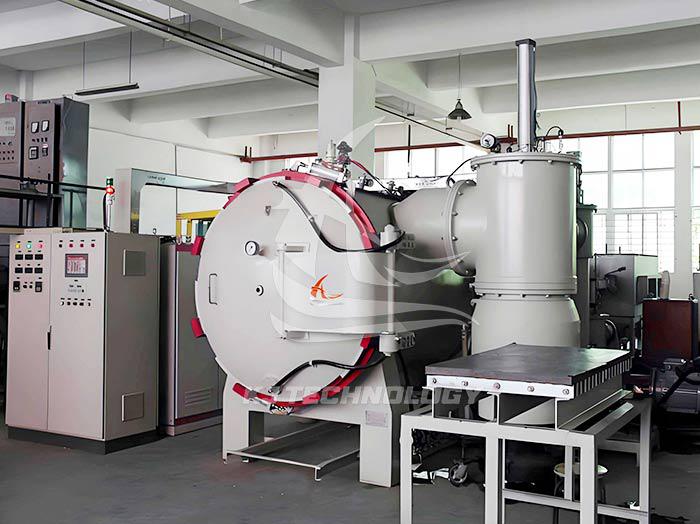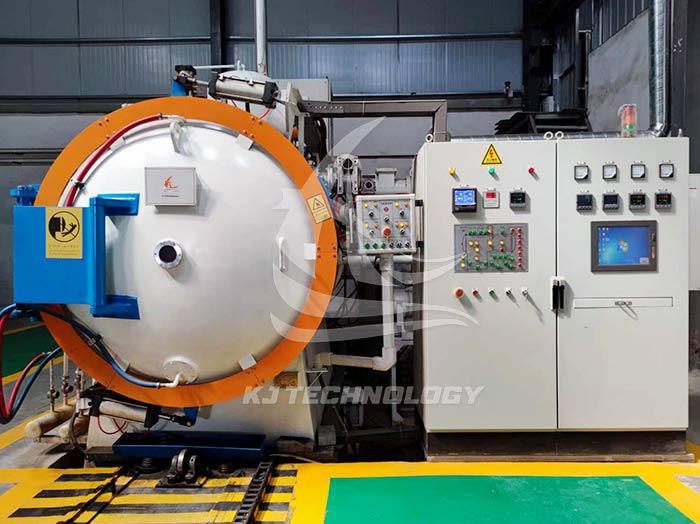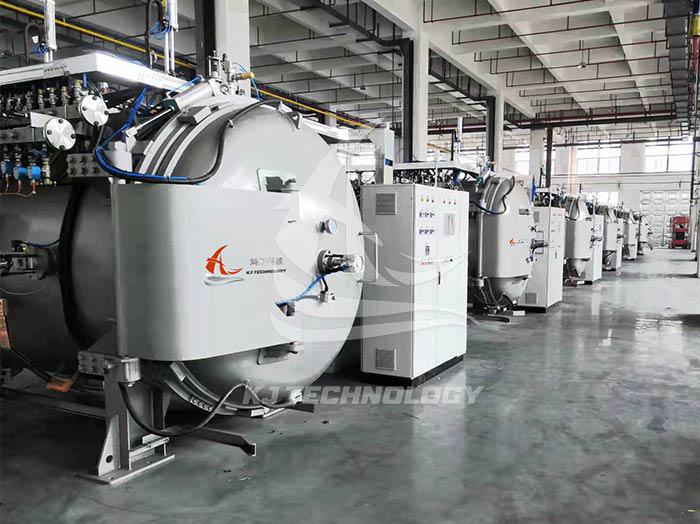How to choose a graphite vacuum furnace for laboratory use?
 07-22-2025 Author: KJ technology
07-22-2025 Author: KJ technology
When choosing a graphite vacuum furnace for laboratory use, a comprehensive evaluation should be conducted based on core parameters such as temperature range, vacuum degree, heating elements, control system, cooling method, furnace structure, brand, and after-sales service, combined with experimental needs.
1. Clarify the temperature requirements for the experiment
The temperature range of graphite vacuum furnaces used in laboratories is usually between 900 ℃ and 2400 ℃, and should be selected according to the experimental materials:
Low temperature experiment (900 ℃ -1600 ℃): suitable for metal annealing, ceramic pretreatment and other processes, can choose a vacuum furnace with a rated temperature of 1600 ℃ (such as a horizontal vacuum furnace).
Medium temperature experiment (1600 ℃ -2000 ℃): To meet the requirements of high-temperature annealing, solution treatment, etc., it is recommended to choose equipment with temperature control accuracy of ± 1 ℃ and temperature uniformity of ± 5 ℃ (such as vacuum graphite hot press furnace).
High temperature experiment (2000 ℃ -2400 ℃): Used for processes such as carbon fiber graphitization and graphite purification, a high-temperature graphitization furnace (such as a graphite vacuum box furnace, with a maximum temperature of 2400 ℃) should be selected.
2. Match vacuum requirements
The vacuum degree directly affects the purity of the experimental material and the reaction environment, and should be selected according to the process:
Low vacuum (10 ⁻¹ -10 ⁻² Pa): suitable for general metal heat treatment, optional combination of mechanical pump and Roots pump.
High vacuum (10 ⁻² -10 ⁻³ Pa): Used for semiconductor material annealing, crystal growth, etc., diffusion pumps or molecular pumps (such as a maximum vacuum degree of 6.67 × 10 ⁻³ Pa) are required.
Ultra high vacuum (<10 ⁻ ³ Pa): For special experimental requirements such as nanomaterial preparation, an ion pump+turbo molecular pump system needs to be selected.
3. Choose heating elements and materials
The material and form of the heating element determine the heating rate and temperature uniformity:
Graphite heating element: high temperature resistance, low cost, suitable for most high-temperature experiments (such as silicon carbide sintering).
Carbon carbon composite material (CFC): With low heat storage capacity and fast cooling rate, it is suitable for processes that require rapid temperature rise and fall (such as high-temperature alloy quenching).
Metal heating elements (molybdenum, stainless steel): materials used for reacting with carbon at high temperatures (such as certain ceramic sintering), avoiding the use of graphite elements.
4. Evaluate the functionality of the control system
The control system is the core of the vacuum furnace and needs to have the following functions:
Temperature control: Supports programmable program automatic control, with a temperature control accuracy of ± 1 ℃ (such as PLC+touch screen system).
Vacuum control: automatically switches between high and low vacuum modes, equipped with high-precision measuring equipment such as ionization vacuum gauges.
Security protection: Over temperature, over pressure, water under pressure alarms, and electrical interlock protection (such as sound and light alarm systems).
Data recording: Supports storage and analysis of experimental data for process optimization.
5. Consider cooling methods
The cooling method affects experimental efficiency and material properties:
Air cooling: pollution-free, surface clean, suitable for most heat treatment processes (such as using air cooling, adjustable pressure from 0-20T).
Oil cooling: The cooling speed is fast, but the surface may be carburized, which needs to be selected according to the material characteristics (such as quenching certain high alloy steels).
Water cooling jacket: protects the outer shell of the furnace body and reduces thermal deformation (such as using a double-layer water cooling structure for the furnace body).
6. Verify the structure and dimensions of the furnace body
The furnace structure needs to match the experimental materials:
Vertical furnace: suitable for long strip materials (such as carbon fiber bundle graphitization).
Horizontal furnace: suitable for bulk materials (such as metal ingot annealing).
Working size: Choose according to the sample size, such as working size of φ 160mm × 160mm, suitable for small-scale experiments.
7. Choose brand and after-sales service
Famous brand: High equipment stability and complete technical support.
After sales service: Choose manufacturers who provide installation and debugging, technical training, and spare parts supply to ensure long-term stable operation of the equipment.
Cost effectiveness: Balance equipment price and performance, avoiding excessive pursuit of high-end configurations (such as high-end isostatic pressed graphite with excellent performance but high price, and extruded graphite suitable for short-term use).








